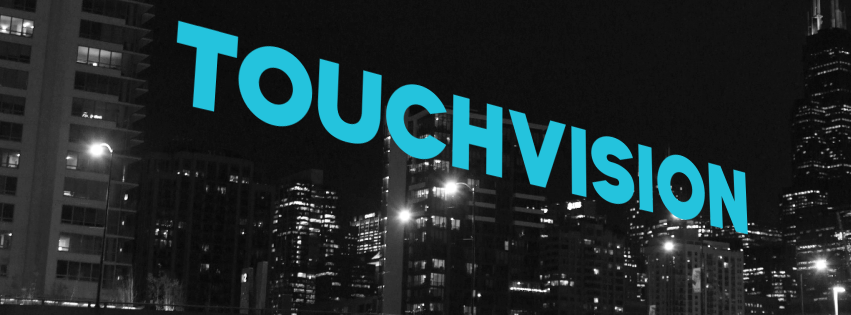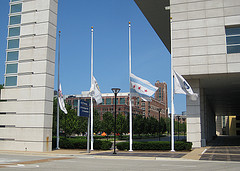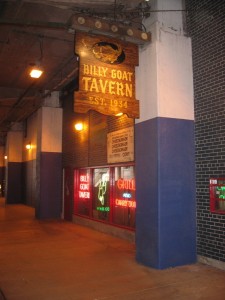 Yesterday, the staff of Touchvision was informed our company would be shutting down, effective immediately. A bunch of my fantastic and talented colleagues are looking for work today so if you need writers, producers, editors or any other kind of content-slingers, I got a list for you.
Yesterday, the staff of Touchvision was informed our company would be shutting down, effective immediately. A bunch of my fantastic and talented colleagues are looking for work today so if you need writers, producers, editors or any other kind of content-slingers, I got a list for you.
A little more than a year ago, Justin Allen – a guy I’d briefly worked with on a video series for Chicago magazine – said he was rebooting the two-year-old company into a place that allowed for creative risks and asked if I wanted to join as the editorial director. For someone who looks for fun and creative challenges in his work, it was perfect. Plus, I got to work with Jessica Galliart again who makes everything she touches better. (Hire her.)
This piece in Crain’s by Lynne Marek talks about what it was like to turn around that company. I give her an enormous amount of credit for getting what we were about and digging into what we do.
While its end may suggest we didn’t succeed (media critic Robert Feder calls it a “noble failure” and says we did “a lot of good work”), I’ll say here that a company trying to move from a traditional TV model to one informed by digital and social media has a lot of challenges. We just ran out of time. Maybe the task was greater than us. But we worked our asses off trying. We had a lot of support from our board and our investors, too.
I still think something like this can work and make money. Touchvision’s end and the shutdown of Al Jazeera America’s TV outlet may seem like a counterargument but I’d point you to its digital arm, AJ+. They do excellent work in the vein of what we were doing at Touchvision and have had a lot of success with it.
Feel free to skip the rest of this if you like but I don’t want to wrap this without calling out some of the excellent things that Touchvision created in little more than a year and would not have been possible without someone like Justin at the helm and many talented people behind-the-scenes.
(Click these links now because I’m not sure how long they will be around).
On my first day, I saw a preview of a feature we did on cleaning up a former meth house. It’s bracing and sad but I knew then that this was a place that was capable of wonderful things.
One of the first things I helped produce was this four-part (!!!) series on Uber and its effects on the economy. If anything, the issues we raised there have become even more prevalent since then. (Check me out in part 4 as I moderate a discussion between our two producers and briefly fulfill my dream to host a news and civic affairs show!)
We also did a great job at making TV seem more like the Internet. This daily news series called Speaking of News started on the live streaming platform Periscope. I’d point an iPhone at the incomparable Molly Adams while she sat in our company’s kitchen talking about whatever important stories and angles she felt were being ignored that day. It evolved into this shot-in-the-newsroom show mainly made for Facebook and YouTube and aired in a shortened form on our daily TV show.
Using that model, we launched another Periscope show called We Should Talk About This with Gwen Purdom and Erik Niewiarowski. It was pop culture-focused and would run for fifteen minutes on Periscope while a three minute version ran on YouTube, Facebook and TV. The show was a joy to watch because of Gwen and Erik’s incredible chemistry and really hit its stride when Gwen brought in a stuffed deer head to hang in the background.
WE PRODUCED A TV SHOW WITH A STUFFED DEER HEAD IN THE BACKGROUND.
Also worth noting here that WSTAT was produced every day by our social and digital producer Angie Jaime. For years, I’ve been in places that talked a good game but never quite empowered their social/digital teams to make, produce and improve our content. I’m really glad we did and we were the better for it.
We had one of the best social commentators anywhere in Felonious Munk. You’ll see more of him soon as he’s already appeared on The Nightly Show. Working with him on his pieces was always a highlight of my day.
Plus, our docs team – run by Lauren Mialki – did some of the most beautiful, moving work you’ll ever see. A look at youth affected by Chicago violence, a profile of a guy who runs The First Church of Marijuana and what it’s like to be a 25-year-old with cancer. Our special projects group, under the guidance of Julie Svetcoff, cranked out new, experimental projects every week with some of the best comedians in Chicago.
We did long pieces of cultural analysis, we talked about Internet harassment, we had series on everything from science and psychology to marijuana to cocktails to bullying to gender issues.
Every single day we produced a morning news show (with headlines, culture and business news) and figured out how to make it work as social media content.
And we held a Chewbacca impersonation contest.
That’s just a few highlights. We got to hire and work with people I’d long admired. Every single day, I was stunned a place existed that was doing this kind of work and my team and I were a part of it.
I say all this not to brag on us too much but to tell you that there are some peerlessly talented people out there looking for work. And anyone who tells you it’s not possible to run a high-caliber media company in Chicago is trying to sell you something. We had some pretty solid plans for how to make money at it, too.
And if you’d like to know how…well, I have some time on my hands and I know some other folks who do, too. Get at me.





